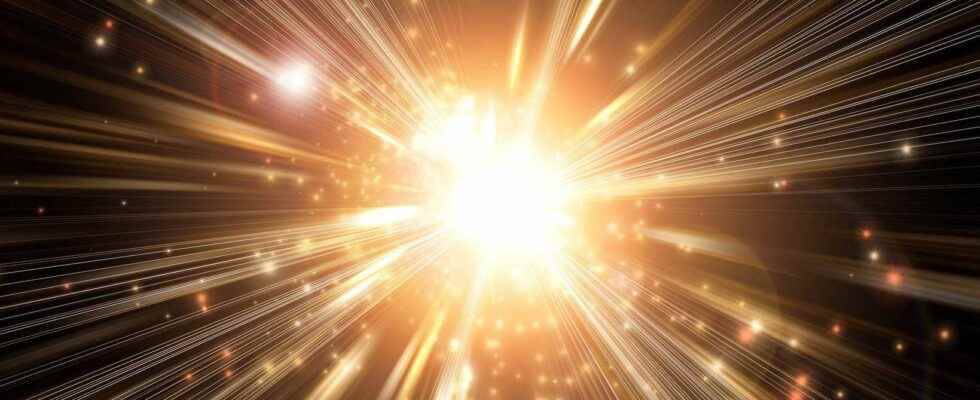Many people are probably unaware of this, but many scientists who have profoundly marked the XXand century were born in territories that are today in Ukraine. Accuracy is important because some could for other reasons be qualified as Russians or Poles in particular. Let’s see three examples.
First there is George Gamow, born on March 4, 1904 in Odessa and who died on August 19, 1968 in Boulder, Colorado (United States), whom the general public probably knows above all as one of the fathers of the theory from big Bang. Indeed, if everything really begins with Georges Lemaitre in the 1930s which not only laid the foundations of the relativistic theory of the Big Bang, anticipating in the process the work in cosmology quantum of researchers of the caliber of Hawking, it is indeed Gamow and his collaborators who develop the part concerning the nucleosynthesis paramount and which anticipate, particularly in the case of Ralph Alpherthe existence of cosmic radiation paramount.
From the Big Bang to the living
If Gamow began to study science at the University of Odessa, a turning point in his training undoubtedly occurs when he arrives in Saint Petersburg where he will become the friend and fellow student of the legendary Lev Landaualso a student at the time in the 1920s. Gamow initially wanted to work in the field of general relativity with Alexandre Friedmann who unfortunately died a few months after Gamow’s arrival in September 1922.
It is finally with the physical nuclear power that Gamow will make a name for himself, in particular by discovering thetunnel effect in Quantum mechanicsone of the keys to understanding the origin of theenergy from stars via the reactions of merger thermonuclear.
Gamow will flee the Soviet state to emigrate to the United States, which will lead him to work on the bomb hydrogen. At the beginning of the 1950s, he became interested like Schrödinger in the physical and chemical nature of heredity and some of his ideas were to influence, as in the case of Schrödinger, the discovery and work on the structure ofDNA made by Francis Crick and James Watson in 1953.
Georges Gamow was also a remarkable popularizer of science, notably with the book ” One, two, three… infinity “, which is reminiscent in a simpler way of the famous work of Roger Penrose ” Discovering the laws of the universe », but one could also cite the series of works with Mr.Tompkins.
A presentation of the life of Stanislaw Ulam. To obtain a fairly accurate French translation, click on the white rectangle at the bottom right. The Polish subtitles should then appear. Then click on the nut to the right of the rectangle, then on “Subtitles” and finally on “Translate automatically”. Choose “French”. © IPNtvPL
From set theory to the hydrogen bomb
Let us now turn to the case of Stanislaw Ulam, a genius mathematician who was born on April 13, 1909 in what is now Lviv, Ukraine, but was long considered part of Poland under the name Lwów.
Ulam was one of those universal geniuses capable of making contributions to all branches not only of mathematics but of science in general. Futura dedicated him a biography to which we refer you in addition to the video above. Very recently, a film was dedicated to him, presenting him when he will discover the key to the functioning of the hydrogen bomb in the United States.
1942, New Mexico. Stan Ulam, a Polish mathematician, joins a secret group of researchers from around the world to collaborate in the creation of the hydrogen bomb. Far from his family who remained in Europe and torn between ethical questioning, scientific progress and political urgency, he took part in a crucial episode in history. To obtain a fairly accurate French translation, click on the white rectangle at the bottom right. The English subtitles should then appear. Then click on the nut to the right of the rectangle, then on “Subtitles” and finally on “Translate automatically”. Choose “French”. © Rezo Films
From the Earth to the moon
Let’s finish with Sergei Korolev, to whom we owe the success of theastronautics Soviet after the Second World War and which therefore enabled the launch of the first satellite Sputnik 1 on October 4, 1957, and of course Gagarin’s flight with Vostok 1 on April 12, 1961. Meanwhile, Korolev is also behind the first lunar probes and on September 12, 1959, the Luna 2 probe set off towards the Moon that it will be the first to reach by crashing on its surface, east of the Mare Imbrium.
Sergei Korolev was born on December 30, 1906 in Zhytomyr, today in central Ukraine, and died on January 14, 1966 in Moscow. He began his scientific training at the Kyiv Polytechnic Institute before ending it in Moscow, becoming an aeronautical engineer in 1929. The following year, he became interested in aircraft take-off propulsion by rocket engines. with some propellant liquid, which will quickly lead him to conduct research on missile and rocket planes.
A victim of the Stalinist purges at the end of the 1930s, it could only really show its potential after Stalin’s death and with the development of the first intercontinental ballistic missile, the ancestor of the launchers Soyuz. Korolev will also be at the origin of the Soviet manned lunar program and the Voskhod 2 mission which, on March 18, 1965, will allow the cosmonaut Alexei Leonov to be the first man in history to perform a spacewalk in orbit around our planet.
Korolev will not see the rest because in January 1966, suffering from a Cancerhe died during an operation.
Interested in what you just read?
